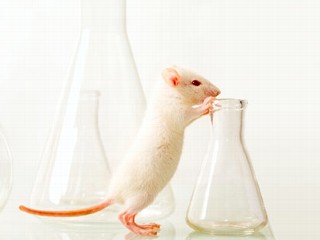Environmental Health News Round-Up
 Current events in Dallas and Frisco kept us off our usual Environmental Health beat for awhile. Here's a round-up to get caught-up with some of the most important recent news:
Current events in Dallas and Frisco kept us off our usual Environmental Health beat for awhile. Here's a round-up to get caught-up with some of the most important recent news:
Secondhand Smoke is a Big Source of Lead – Children in families with one smoker had lead levels 14 percent higher than children who live with non-smokers. That number jumped to 24 percent if children lived with two or more smokers according to a new John Hopkins study. The article is frustrating however because it doesn't say where the lead in cigarettes comes form
Phthalates Linked to Obesity in African-Americans – A new study shows that African-American children who have high levels of an environmental contaminant called phthalates are more likely to be obese.The study, published in Environmental Health Perspectives on Feb. 5, showed that African-American children had higher levels of the chemical compared to white and Hispanic children. Phthalates are found in plastics but also can be found in the gas patch and in the emissions of waste-burning cement plants like the ones in Midlothian.
The Cancer Risk of Fire Fighters – Tony Stefani used to be a firefighter and a cancer patient. The two, he believes, had something to do with each other.Stefani was a firefighter in his native San Francisco for 28 years, nearly half of them as captain of a rescue squad. But the profession he loved may have nearly cost him his health. The job involved breathing all kinds of substances, from the diesel fumes of fire engines to smoke laced with flame retardants in people's homes. That contact, Stefani believes, is the reason for his diagnosis of transitional cell carcinoma, a rare cancer in his pelvis, in 2001. He soon learned that hundreds of active and retired firefighters also had various kinds of cancer.
Pesticides Linked to Type 2 Diabetes – Pesticides in food, air and water may be directly linked with the development of type 2 diabetes, regardless of a person's age, gender or body mass index, a new Spanish research study has found. These substances tend to concentrate in body fat, and they might be one of the reasons why obese people are more likely to develop diabetes, since the greater the fat, the higher the pesticide concentrations in the body, researchers from the University of Granada found.
PAH's Make Cockroach Allergies More Likely – Results from a study published on Feb. 6 in the Journal of Allergy and Clinical Immunology found that exposure to a certain type of air pollution found in diesel exhaust and other combustion-related byproducts can increase the likelihood of developing a cockroach allergy. Researchers studied a common class of combustion byproducts called polycyclic aromatic hydrocarbons, which are products of combustion.
Another Study Ties Air Pollution to Lower Birth Weights – A pregnant woman's exposure to outdoor air pollution may increase the risk of her baby being born at a lower birth weight, according to a large multinational study. Researchers from 14 sites in nine countries, including Seoul, South Korea; Atlanta; and Vancouver, British Columbia, compiled the average levels of particulate air pollution to which women were exposed during the course of their pregnancy. Sources of particulate air pollution include traffic exhaust, power plants and even dust. The researchers found that for every 10-microgram increase of pollution particles per cubic meter of air, birth weight decreased by 8.9 grams, roughly one-third of an ounce, and infants were 3 percent more likely to be a low birth weight. An infant is considered low birth weight if he or she weighs less than 5 pounds 8 ounces at birth. Low birth weight is a known risk factor for infant mortality as well as heart, breathing and behavior problems later in life.
